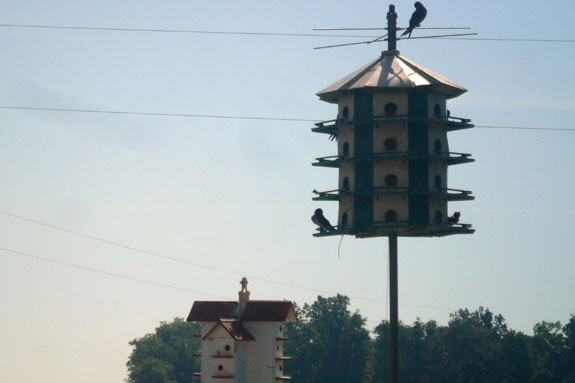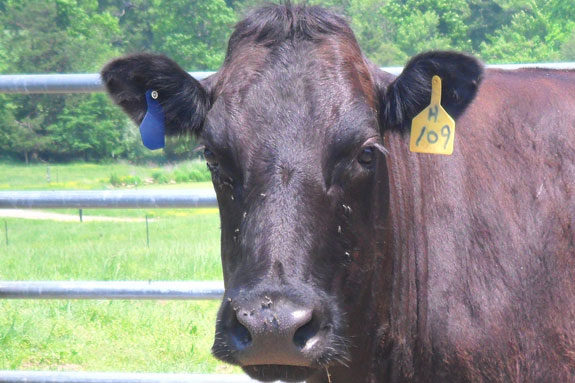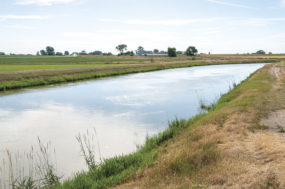Flies not only cause irritation but can carry and spread diseases, such as mastitis and infections, and can cause economic losses due to reduced gains and performance. There are various methods that can be used to manage fly populations.
Various fly species are common problems in livestock operations. Face flies gather on and irritate the animal’s face. These flies not only cause irritation but can also spread pinkeye. Horned flies feed on the animal’s blood.
According to Dr. Lee Townsend, UK Extension entomologist, weaning weights of calves and yearling cattle are around 15 pounds less when there is an average of 200 horn flies on calves throughout the summer. Making an effort to control flies can reduce irritation and economic losses.
Manure management on a farm can greatly affect fly populations. Reducing breeding grounds is an effective way to manage these pests. Bedding, spilled feed, decaying organic matter and extremely wet areas act as breeding grounds for many flies.
Some of these areas are easier to control than others. These pests reproduce and thrive in areas where manure accumulates such as in corrals, sacrifice areas, feeding areas and near water sources and shade. It is important that these areas are designed to have good drainage to reduce the occurrence of extremely wet areas and standing water.
Manure should be removed from these areas regularly. Because fresh manure is a main breeding site for face and horn flies, dragging fields to spread manure in pastures can be used as a method to reduce fly populations. When applying manure from barns, winter lots, or other sites, spread the waste thinly over the fields to increase drying time.
Be sure to conduct a soil test before spreading manure on pastures and not to overapply nutrients which can cause detrimental effects to the environment. Composting manure is ideal to control flies as it will kill the majority of fly eggs.
Non-chemical means of controlling fly populations include trapping or using natural predators. Fly traps can be set up around the farm to reduce fly populations. However, these may not significantly reduce populations.
Walk-through fly traps scrape or causes flies to take flight and leave the animals as they pass through. For this method to work, the animals need to pass through the trap often. Increasing the amount of natural predators is another natural, non-chemical way of reducing flies.
Dung beetles and hister beetles can reduce fly populations by eating fly eggs in the manure. Parasitic wasps are very small insects which do not harm humans or livestock. These wasps, often called fly predators, kill fly pupae. These insects are available for purchase to increase on-farm populations.

Various bird species can also greatly reduce fly populations. Some birds will eat flies directly off the animal. Providing an adequate ecosystem to increase the population of these birds can be beneficial.
Putting up bird houses is a common practice to increase bird populations. These biological approaches may be good options for both organic and conventional farmers.
Chemical means of controlling flies may be the most effective. Sprays, mists, fogs and pour-on insecticides are directly applied to the animals hide. Dust bags, back rubbers, face rubbers and back oilers are often preferred because they are self-applied and do not require the livestock be brought in from the pasture.
These self-applied devices should be placed where livestock pass under them on a daily basis such as around waterers. Dust bags require less maintenance because they do not need to be replenished as frequently and are less affected by weather. Dust bags are also better at controlling face flies than back rubbers and back oilers.
If using back rubbers or oilers, use a high grade mineral oil and not motor oil. These should be saturated and serviced weekly. Tying long strips of cloth, commonly referred to as face flips, to the rubber can increase the control of face flies.
Ear tags that include insecticides are another common form of fly control. These tags effectively control flies by slowly releasing the insecticide over time. Read labels and follow directions as some active ingredients may not be recommended for use on lactating dairy cows or calves younger than three months. Horn flies may become resistant to an insecticide found in an ear tag over time.
Therefore, it is recommended that insecticides found in ear tags be rotated when horn fly control appears to be markedly less than in previous years. Switching from pyrethroids to organophosphates is a common rotation applied. Remember that this rotation of insecticide should include products applied to rubbers, dust bags, or directly to the animal as well.
Feed additives can also be used to control fly populations. Feed additives are used to reduce fly larvae in fresh manure. Cattle must consume the minimal amount of additive regularly for this method to be affective. Results from controlled studies show variable results regarding their effectiveness.
Pests that cause irritation to cattle and possible economic loss can be difficult to control throughout the grazing season. There are various ways to control flies through chemical and non-chemical methods. If using chemical means, always read the label and follow direction for safe use of any pesticide.
For more articles from the UK Master Grazer Program monthly newsletter, click here. FG
Lyndsay Jones would like to thank the UK Master Grazer Program and the KY Agricultural Development Fund.
—University of Kentucky College of Agriculture Master Grazer Program
PHOTOS
Photos courtesy of University of Kentucky College of Agriculture Master Grazer Program.








